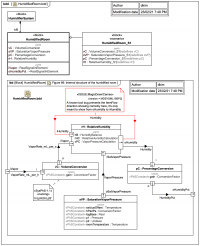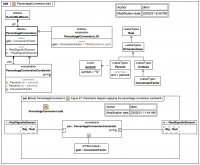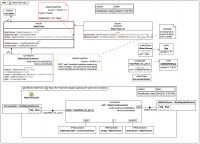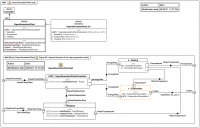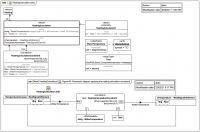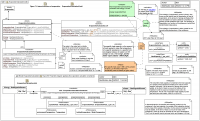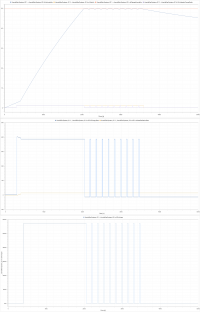
This fascinating example from the SysPhS-1.1 specification is far more complex and of a different nature than others in the specification. As explained in the spec, it is essentially a numerical signal processing style application involving equations for physical quantities, but without physical interaction modelling:
In other words, it is shunting calculated values for physical quantities from one "computation block" to another, it is NOT representing physical flows.
It's an excellent example problem, but the use of Real throughout for all quantities makes it very hard to figure out exactly what is going on, especially where the names of variables in the equations are not always clear, and where the underlying units/scale for values is different for value properties and parameters with the same or similar names in some contexts.
This trail version of the Humidifier sample problems addresses that quite thoroughly, to the extent that the physical setup can be gleaned. This involves as much dimensional-analysis detective work as it does basic uni-level thermo, and leads us to two conclusions:
Please keep this in mind throughout this trail section:
Once you have explicit ValueTypes you can leverage them in many useful ways. For example, this trail version makes heavy use of SysML ItemFlows (with ValueTypes as conveyed Classifiers) to indicate what quantity values are flowing where. This really helps!
Additionally, the model element naming used throughout this trail version - while not perfect - is far more consistent than the specification version, although some of the value property parameter names and parameter names are left as they were in the spec so it's not entirely consistent with Webel Best Practice.






